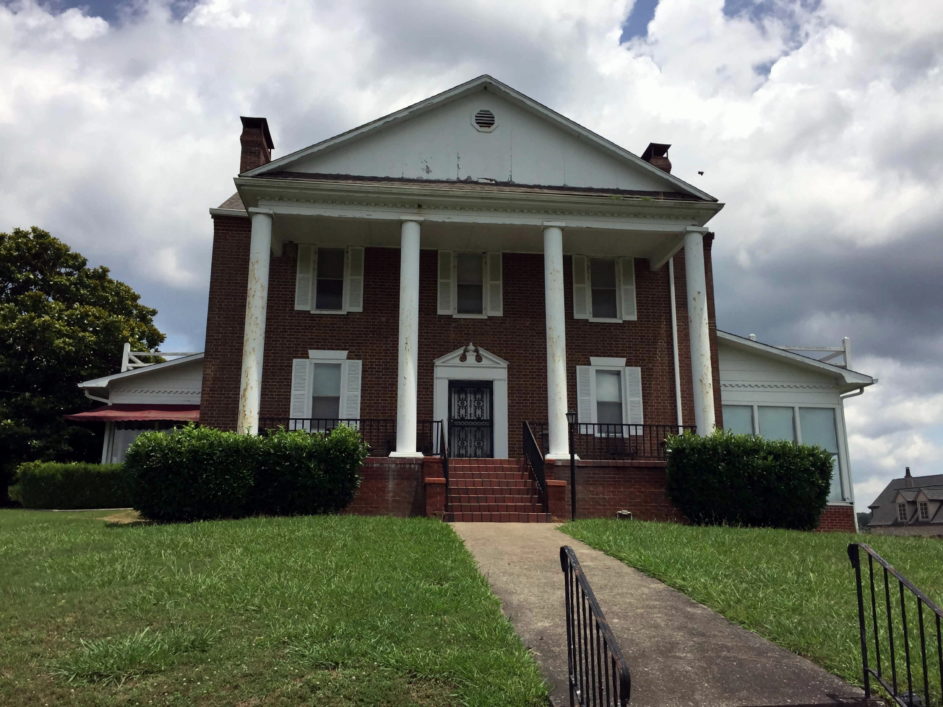“Whoa! Hold on, men! I think we need to cut ourselves loose. The water is too high and the shoals too rough. We will need to proceed to New Orleans on foot.” Those words were most likely spoken by William Caswell to his contingent of Knoxville Dragoons at Muscle Shoals, Ala., in 1846. The Dragoons, mounted soldiers who fought as cavalrymen on attack and dismounted infantrymen on defense, fought with a type of short musket called a dragoon.

A U.S. Army encampment under the command of general and future president Zachary Taylor, along the coast of southern Texas, 1847 (Credit: Universal Images Group/Getty Images)
These Knoxville Dragoons who had been assigned to the 1st Tennessee Regiment had hooked their flat boats to the steamboat San Martin with a destination of New Orleans to participate in the Mexican-American War, which involved American rebels fighting for Texas independence from Mexico.
In December 1845, Mexico had severed relations with the United States after Texas was annexed. What followed was an invasion in 1846 by the Mexican army that shed American blood on American soil. Perhaps the Americans were so incensed over the slaughter at the Alamo in 1836 that this was the proverbial last straw. It may well have provided the incentive to drive the Mexican soldiers back across the border once and for all.
In 1846, Secretary of War William Marcy requested 2,800 recruits from Tennessee to fill two regiments of infantry and one of cavalry, and 30,000 Tennesseans offered their services, thus preserving the reputation of the “Volunteer State.” The response was so immense that state officials employed a lottery system to determine who would serve and who would return home.

Benjamin Franklin Prater (Photo restoration by
Gary Gevedon; courtesy of Clara Prater and Roy Prater)
Benjamin Franklin Prater (1823-1887) was the grandson of a very wealthy and successful landowner, Benjamin Franklin Prater (1772-1851), and Nancy Lane Prater (1777-1833). His grandfather, “Big Ben,” owned thousands of acres of land along the Holston River in Knox County, Blount and then-Roane County (later to become Loudon County). His home on Beals Chapel Road is still standing today.
Young Benjamin was one of those Tennessee Volunteers who joined the Knoxville Dragoons and was later part of this 1st Tennessee Regiment. One can only wonder why someone would leave his family and comfortable surroundings in beautiful East Tennessee and trek to New Orleans to participate in a war on foreign land.
But yet, young Benjamin, barely 23, bravely fought at Veracruz and at Cerro Gordo. These victories led ultimately to the capture of Mexico City. Prater was discharged on May 31, 1847, when his enlistment was up, and returned home to marry Malinda Hardin. He was the progenitor of eight children, five of them sons, who have continued to maintain the Prater lineage to this day. These men and their ancestors have contributed much to this area and have continued to be successful businessmen and landowners.
Benjamin lived his last days on a farm near Old Stage Road in deep West Knox County and Loudon County. His last request before his death was to be allowed to sit up and look out the window at his cattle.
Because of Benjamin’s courage and belief in the freedom of the American way of life, he and others can be thanked for the expansion of the westernmost land of the United States. Through the Treaty of Guadalupe Hidalgo in 1848, Mexico received $15 million and gave up its claims to Texas and recognized the Rio Grande as the southern boundary of the United States. This provided for the addition to U.S. territory, which included land for the states of Arizona, California, New Mexico, Nevada and Utah, and southwestern Colorado and southwestern Wyoming.
That was 173 years ago, and the irony is that there is still a struggle today at our Southern border to keep our citizens safe from crime and yet honor the amnesty for those seeking life in America. It is fitting that we remember men like Benjamin Franklin Prater for their sacrifices.
(A manuscript of the descendants of Benjamin Franklin and Nancy Elizabeth Lane Prater is on file at the McClung Collection Library in Knoxville.)

Undated photo of Prater home built in 1805 on Beals Chapel Road (Photo courtesy of Clara Prater and Roy Prater)

